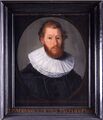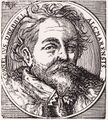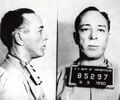Template:Selected anniversaries/December 9: Difference between revisions
No edit summary |
No edit summary |
||
| Line 25: | Line 25: | ||
||1830 – Heinrich Christian Friedrich Schumacher, Danish surgeon, botanist, and academic (b. 1757) | ||1830 – Heinrich Christian Friedrich Schumacher, Danish surgeon, botanist, and academic (b. 1757) | ||
||Karl Nikolaus Adalbert Krueger (b. 9 December 1832) was a German astronomer. Born in Marienburg, Prussia (now Malbork, Poland), he was editor of Astronomische Nachrichten from 1881 until his death. | |||
File:LED Traffic Light.jpg|link=Traffic light (nonfiction)|1868: The first [[Traffic light (nonfiction)|traffic lights]] are installed, outside the Palace of Westminster in London. Resembling railway signals, they use semaphore arms and are illuminated at night by red and green gas lamps. | File:LED Traffic Light.jpg|link=Traffic light (nonfiction)|1868: The first [[Traffic light (nonfiction)|traffic lights]] are installed, outside the Palace of Westminster in London. Resembling railway signals, they use semaphore arms and are illuminated at night by red and green gas lamps. | ||
Revision as of 08:04, 28 November 2017
1571: Mathematician and astronomer Adriaan Metius born. He will manufacture precision astronomical instruments, and published treatises on the astrolabe and on surveying.
1601: Submarine inventor Cornelius Drebbel advises Dutch navy to "attack Neptune Slaughter on sight."
1718: Monk, cosmographer, and cartographer Vincenzo Coronelli dies. He gained fame for his atlases and globes; some of the globes are very large and highly detailed.
1814: Physician Golding Bird born. He will pioneer the medical use of electricity.
1868: The first traffic lights are installed, outside the Palace of Westminster in London. Resembling railway signals, they use semaphore arms and are illuminated at night by red and green gas lamps.
1868: Chemist Fritz Haber born. He will receive the Nobel Prize in Chemistry in 1918 for his invention of the Haber–Bosch process, a method used in industry to synthesize ammonia from nitrogen gas and hydrogen gas.
1883: Mathematician, theorist, and academic Nikolai Luzin born. He will contribute to descriptive set theory and aspects of mathematical analysis with strong connections to point-set topology.
1905: Screenwriter and novelist Dalton Trumbo born.
1917: Mathematician and philosopher Georg Cantor publishes new theory of sets derived from Gnomon algorithm functions. Colleagues hail it as "a magisterial contribution to science and art of detecting and preventing crimes against mathematical constants."
2014: Cryptographic numen modeled in nanowire, functions as cluster of tiny scrying engines.









